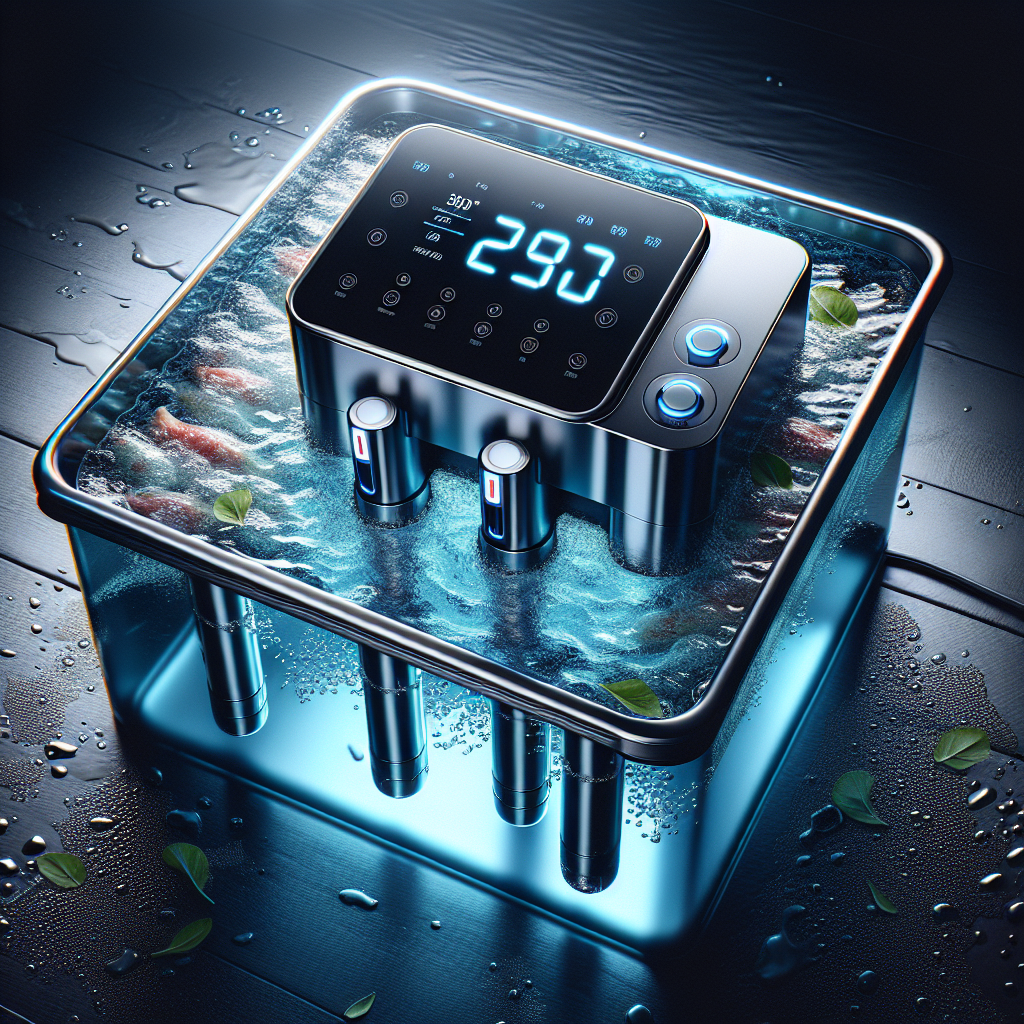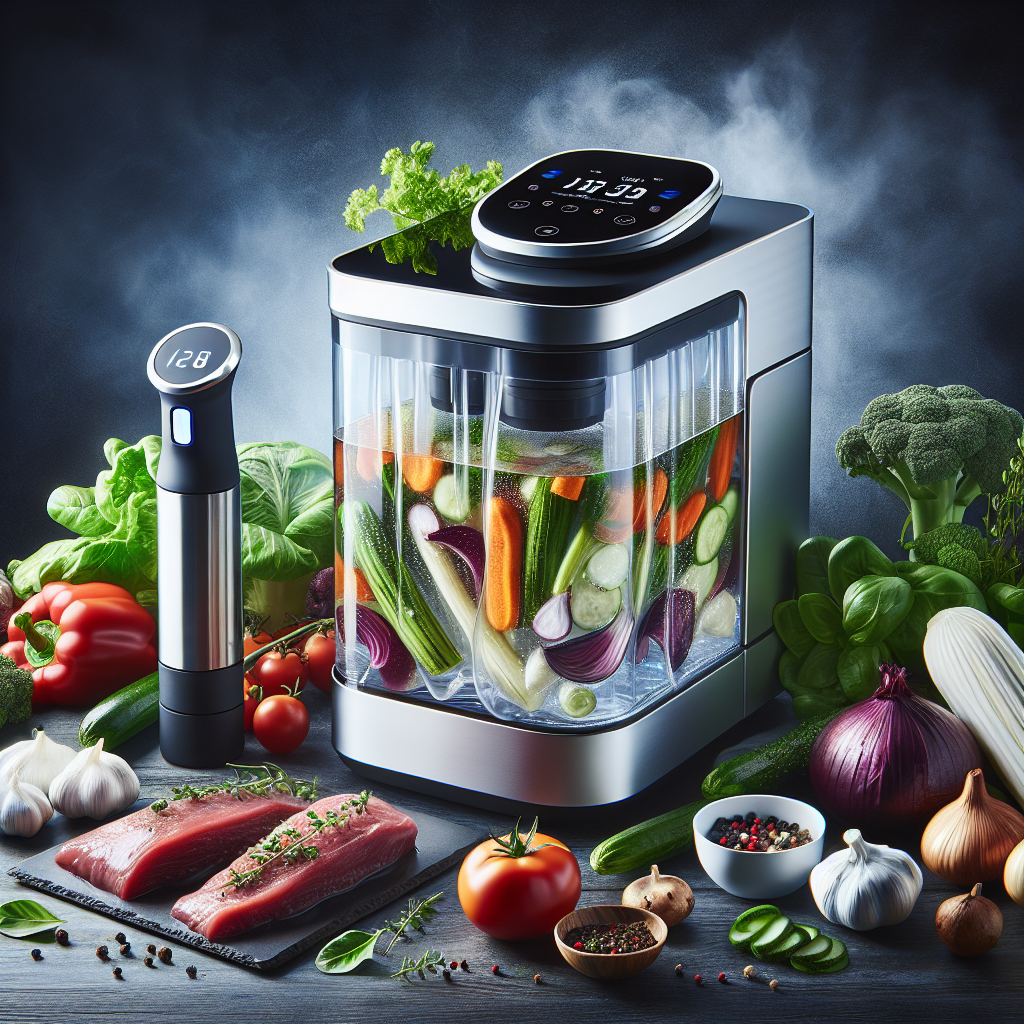
Have you ever wondered about the secret behind perfectly cooked, restaurant-quality meals? Look no further than sous vide cooking. This innovative technique has been gaining popularity among chefs and home cooks alike. But what exactly is sous vide cooking? In simplistic terms, it involves vacuum-sealing food in a plastic bag and cooking it in a precisely controlled water bath. This method allows for precise temperature control, ensuring that your food is cooked evenly and to perfection every time. Whether you’re a culinary enthusiast or simply a curious food lover, dive into the world of sous vide cooking to elevate your meals to an entirely new level of deliciousness.
What Is Sous Vide Cooking?
Sous vide cooking is a unique and innovative cooking technique that has gained popularity in recent years. It is a method of cooking in which food is vacuum-sealed in a bag and cooked at a precise temperature in a water bath to achieve optimal results. This method of cooking has been used by professional chefs for many years but has now become more accessible and widely used in home kitchens.
Definition and Origin of Sous Vide
Sous Vide Definition
The term “sous vide” is a French phrase that translates to “under vacuum.” This cooking technique involves placing food in a plastic bag and vacuum-sealing it before immersing it in a water bath. The bagged food is then cooked at a precise temperature for a specific amount of time to ensure even and consistent cooking.
Origin of Sous Vide
Sous vide cooking was first developed in the 1960s by French chef Georges Pralus. He initially used this method to cook foie gras, a delicate and highly prized ingredient. The technique allowed him to retain the natural flavors, textures, and moisture of the foie gras, leading to its widespread adoption in fine dining establishments.
Historical Background
Sous vide cooking has its roots in the practice of canning and preserving food. The concept of cooking food in a sealed container dates back to the 18th century. However, it wasn’t until the early 20th century that the sous vide technique as we know it today began to take shape. The development of temperature-controlled water baths and vacuum-sealing technology further refined and popularized this cooking method.

How Sous Vide Cooking Works
Basic Principles
The primary principle behind sous vide cooking is precise temperature control. By cooking food at a specific temperature, you can achieve consistent results and retain the natural flavors and textures of the ingredients. The controlled temperature ensures that the food is evenly cooked from edge to center, eliminating the risk of overcooking or drying out.
Equipment Needed
To engage in sous vide cooking, you will need a few essential pieces of equipment. These include a sous vide cooker or immersion circulator, which heats and circulates the water, a vacuum sealer, plastic bags or pouches, and a container or pot to hold the water bath. Additionally, a thermometer and timer are useful for monitoring and tracking the cooking process.
Preparation Process
Preparing food for sous vide cooking involves vacuum-sealing the ingredients in a plastic bag and then submerging the sealed bag in a water bath. Before sealing the bag, you can add seasonings, marinades, or sauces to enhance the flavors. Once sealed, the bag is placed in the water bath, and the sous vide cooker heats the water to the desired temperature. The food is left to cook for the required amount of time, ensuring optimal tenderness and flavor.
Advantages of Sous Vide Cooking
Consistent Results
One of the significant advantages of sous vide cooking is its ability to consistently produce perfectly cooked food. The precise temperature control ensures that the food is cooked evenly, eliminating the risk of undercooking or overcooking. This consistent result is especially beneficial when cooking delicate proteins, such as fish or sous vide steak.
Enhanced Flavors and Texture
Sous vide cooking allows for enhanced flavors and textures in your dishes. By cooking food in a sealed bag, the natural juices and flavors are locked in, resulting in intensified taste and tenderness. Additionally, the controlled cooking process prevents the food from becoming dry or overcooked, ensuring a moist and succulent end result.
Preservation of Nutrients
Unlike traditional cooking methods that can often lead to nutrient loss, sous vide cooking helps to preserve the nutrients present in the food. Since the food is cooked at a precise temperature for a specific duration, the vitamins and minerals are better retained as compared to boiling or frying methods, where nutrients can be lost through heat exposure.
Convenience
Sous vide cooking offers convenience and flexibility in meal preparation. Once the food is sealed in the bag and placed in the water bath, you can walk away and attend to other tasks. The precise temperature control eliminates the need for constant monitoring, allowing you to multitask or prepare other components of the meal. Additionally, sous vide cooking lends itself well to meal prepping, as you can cook large batches of food and store them for later use.
Disadvantages of Sous Vide Cooking
Time Consuming
One disadvantage of sous vide cooking is that it can be time-consuming, especially for foods that require long cooking times. Due to the precise temperature control and slow cooking process, certain dishes can take hours to cook. This may not be ideal for individuals looking for quick meal solutions or those with limited time for meal preparation.
Initial Investment
Another drawback of sous vide cooking is the initial investment in equipment. Sous vide immersion circulators, vacuum sealers, and other necessary tools can be costly. However, as the popularity of sous vide cooking has grown, more affordable options have become available, making it more accessible to home cooks.
Limited Browning and Maillard Reaction
Sous vide cooking does not allow for traditional browning or the Maillard reaction, which is a chemical reaction that enhances flavors and creates that desirable golden-brown crust. While you can achieve a gentle sear or caramelization by finishing sous vide-cooked food in a hot pan or with a blowtorch, it may not replicate the same level of browning as traditional cooking methods.
Popular Sous Vide Techniques
Temperature and Time Control
Temperature and time control are paramount in sous vide cooking. By cooking food at precise temperatures for specific durations, you can achieve the desired doneness and texture. Sous vide recipes often specify the recommended temperature and time, allowing for accurate and repeatable results.
Vacuum Sealing
Vacuum sealing is a crucial step in sous vide cooking, as it ensures a tight seal and removes any air pockets that may affect the cooking process. This method of sealing not only keeps the food moist but also enhances the flavors by trapping the aromas and seasonings within the bag.
Water Circulation
Water circulation is an essential feature of sous vide cooking equipment. Immersion circulators or sous vide cookers maintain a consistent water temperature by circulating the water, ensuring even cooking throughout the water bath. This circulation also helps prevent hot spots and maintains the desired cooking temperature.
Finishing Techniques
After the food has been cooked sous vide, it often requires finishing techniques to enhance the appearance and texture. This can involve searing the meat in a hot pan, grilling, or using a blowtorch to achieve a caramelized crust. These finishing techniques add texture, color, and flavor to the perfectly cooked sous vide dish.
Food Safety Considerations
Pasteurization
Sous vide cooking can contribute to food safety by pasteurizing the food. By cooking food at specific temperatures for a sufficient duration, harmful bacteria and pathogens are effectively killed, ensuring the safety of the cooked food. However, it is crucial to follow recommended cooking times and temperatures to ensure proper pasteurization.
Cooking Temperatures
When cooking sous vide, it is essential to understand the recommended cooking temperatures for different types of food. The USDA and other food safety organizations provide guidelines for safe cooking temperatures to minimize the risk of foodborne illnesses. It is important to refer to reliable sources and follow the recommended cooking temperatures for each specific ingredient.
Time Requirements
The timing of sous vide cooking is crucial to achieve the desired results. Different types of food require specific cooking times to reach the desired level of doneness. It is essential to refer to reliable sous vide recipes or guidelines to determine the appropriate cooking times for each ingredient. Proper timing ensures that the food is thoroughly cooked and safe to consume.
Applications of Sous Vide Cooking
Restaurant and Professional Use
Sous vide cooking has been widely embraced by professional chefs and restaurants around the world. The precise temperature control and consistent results make it an ideal technique for cooking in high-volume kitchens. Sous vide cooking allows chefs to achieve a high level of precision and control over the cooking process, resulting in perfectly cooked dishes.
Home Cooking
Sous vide cooking has become increasingly popular among home cooks due to its accessibility and convenience. With more affordable sous vide equipment available in the market, home cooks can now enjoy the benefits of this cooking technique. Sous vide cooking is particularly appealing for individuals who prioritize convenience, precision, and restaurant-quality results in their home-cooked meals.
Culinary Creativity
Sous vide cooking opens up new possibilities for culinary creativity and experimentation. By precisely controlling the cooking temperature, you can achieve unique textures and flavors that are difficult to replicate with traditional cooking methods. This technique allows chefs and home cooks to push boundaries and explore new combinations of ingredients and cooking techniques.
Frequently Asked Questions (FAQs)
Is Sous Vide Cooking Safe?
Yes, sous vide cooking is safe when proper food safety guidelines and cooking temperatures are followed. The process of vacuum-sealing and cooking food in a controlled water bath helps to kill bacteria and pathogens, ensuring the safety of the cooked food. It is important to refer to reliable sources for recommended cooking times and temperatures to ensure proper pasteurization.
Do I Need Special Equipment?
While sous vide cooking requires specific equipment, it has become more accessible to home cooks in recent years. The essential equipment includes a sous vide cooker or immersion circulator, vacuum sealer, plastic bags or pouches, and a container or pot to hold the water bath. While the initial investment in equipment can be significant, there are now more affordable options available in the market.
Can Any Food Be Cooked Sous Vide?
Sous vide cooking is suitable for a wide range of food, including vegetables, meats, fish, poultry, and even desserts. However, not all food is well-suited for sous vide cooking. Foods with high water content, such as fruits and certain types of seafood, may not yield optimal results. It is important to refer to specific sous vide recipes and guidelines to determine the suitability of each ingredient.
Can Sous Vide Be Used for Large Batches of Food?
Yes, sous vide cooking can be used for large batches of food, making it ideal for meal prepping or cooking for a crowd. The precise temperature control and even cooking throughout the water bath ensure consistent results, even when cooking large quantities of food. However, it is important to consider the size and capacity of your sous vide equipment to accommodate larger batches.
Conclusion
Sous vide cooking is a versatile and precise cooking method that offers numerous advantages to both professional chefs and home cooks. With its ability to consistently deliver perfectly cooked food, enhance flavors, and preserve nutrients, sous vide cooking has become a popular choice for those seeking culinary excellence. While it may require an initial investment in equipment and involve longer cooking times, the results are well worth it. Whether you’re a culinary enthusiast looking to expand your repertoire or someone who values convenience and restaurant-quality meals at home, sous vide cooking is a technique worth exploring.






